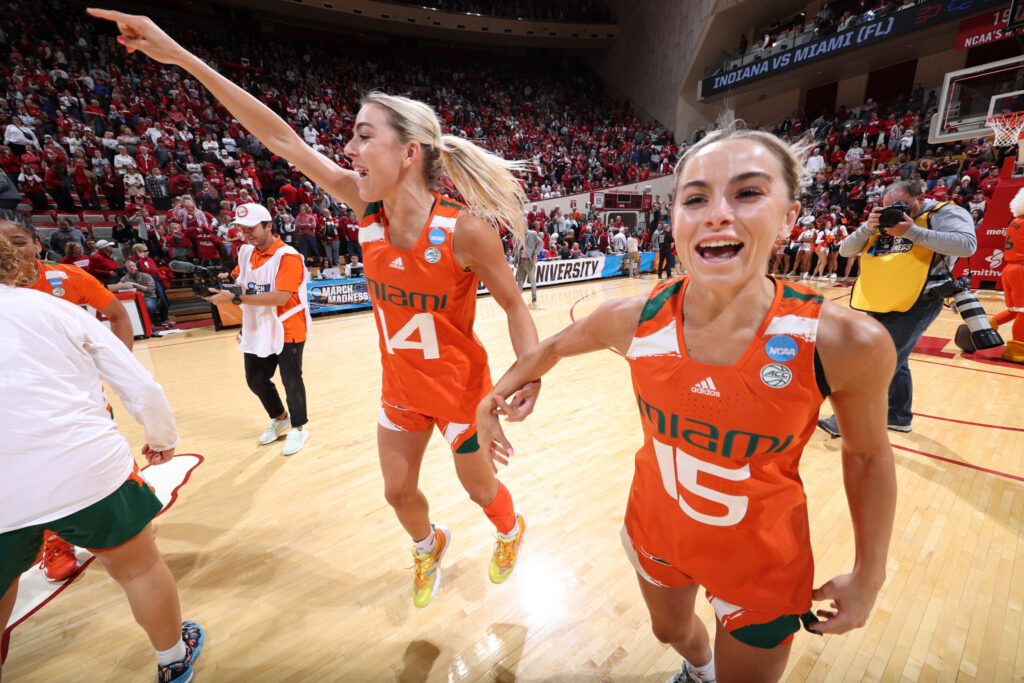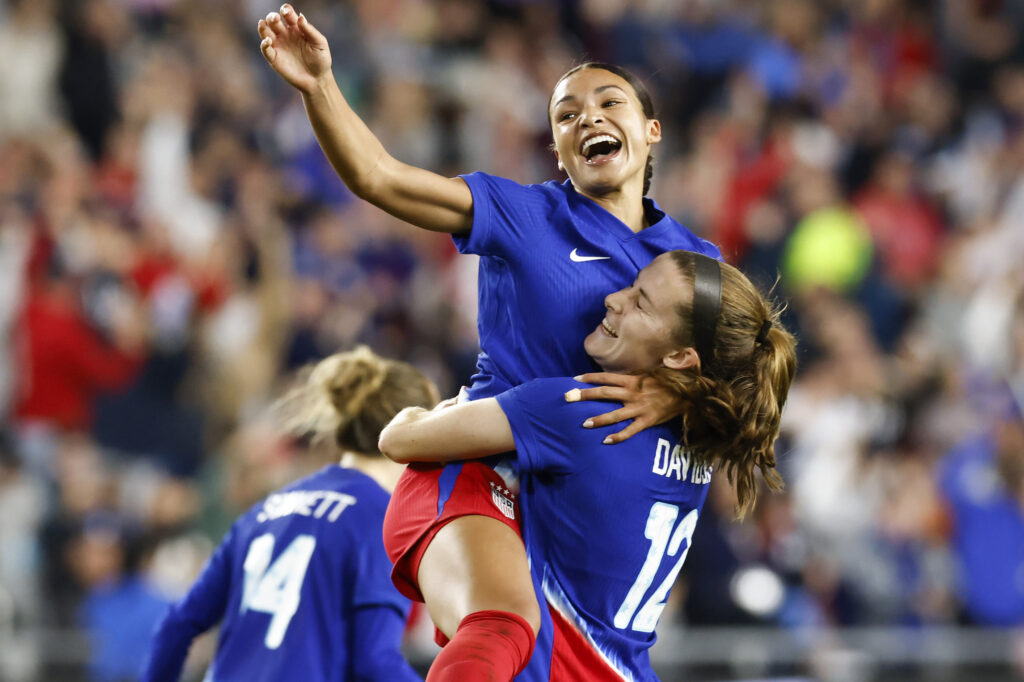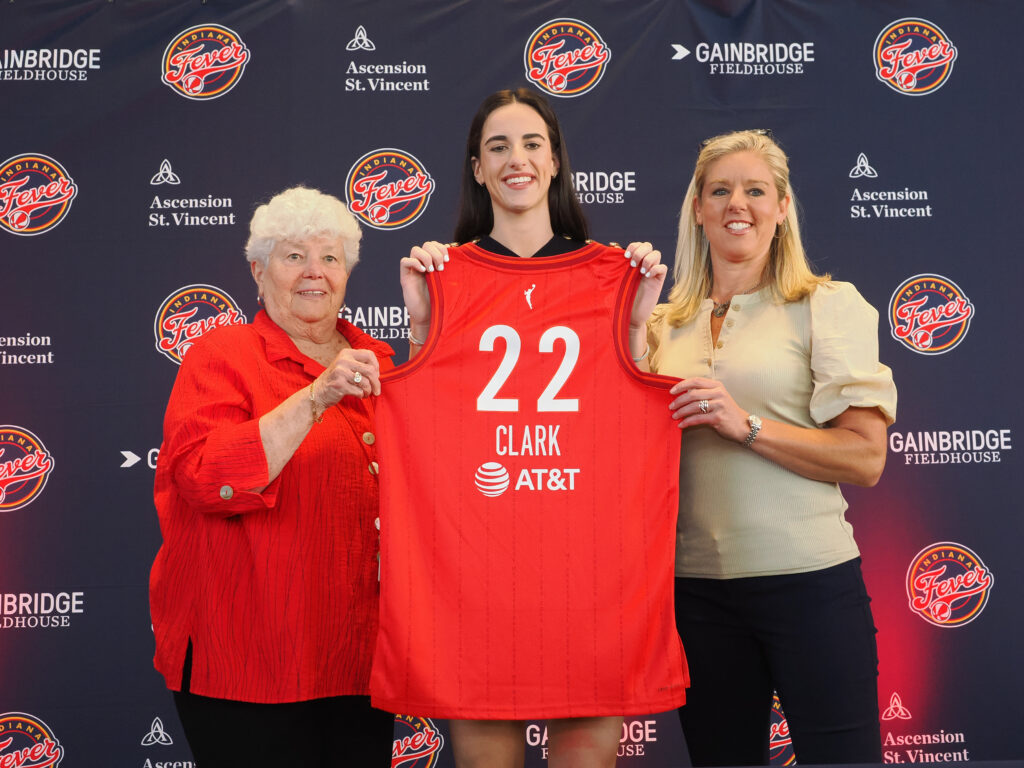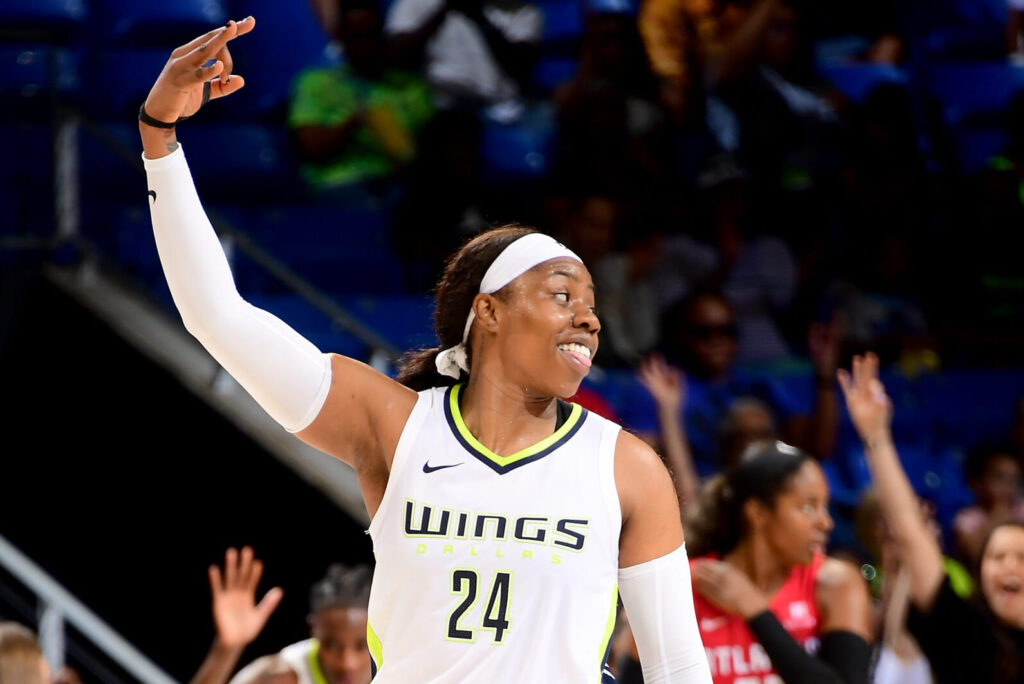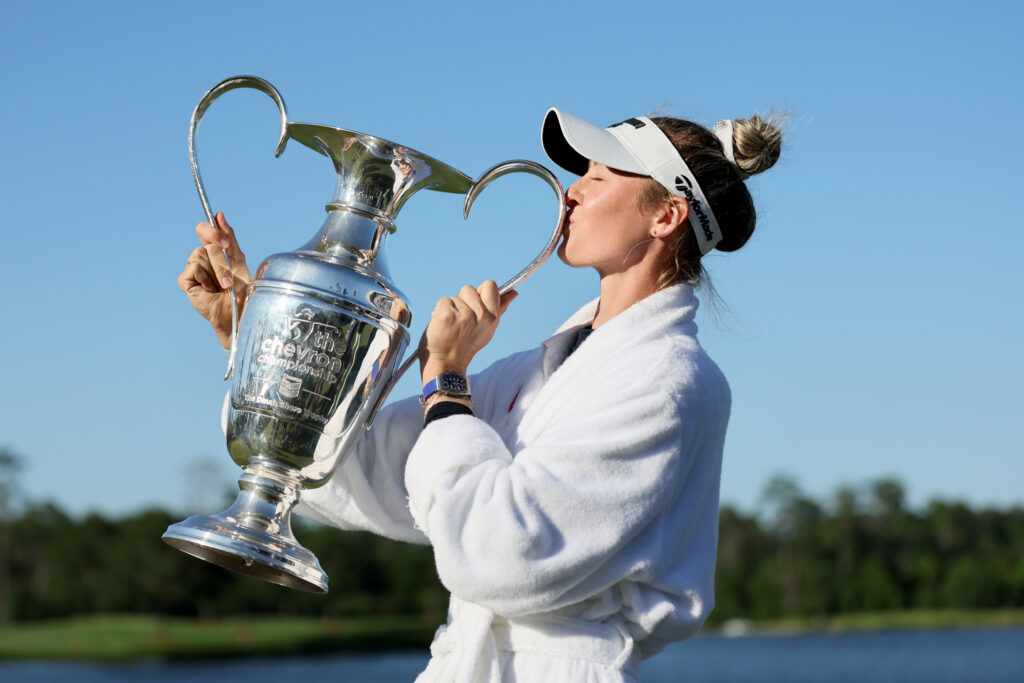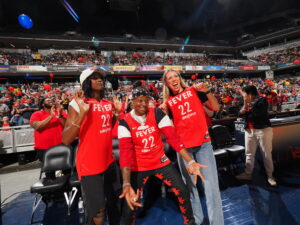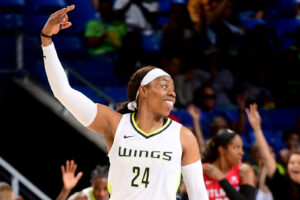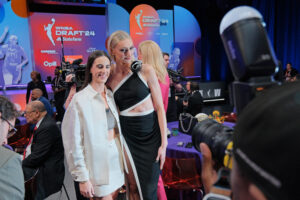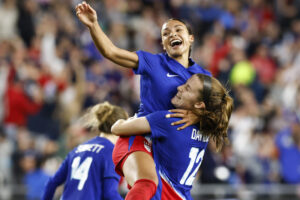Haley Cavinder sprinted toward the Miami bench, her hands in the air, balled into celebratory fists. From the sidelines, Hanna Cavinder worked her way to Haley, arms outstretched, ready to embrace her twin sister.
At halfcourt, the two collided into an airborne hug, sharing a moment before continuing the chaotic celebrations with their teammates.
“Hanna is always the first person I’m going to run to,” Haley says.
No. 9 Miami had just knocked off No. 1 Indiana at Assembly Hall, 70-68 on a last-minute shot, leaving the Hoosiers faithful confused and dejected in the stands. For Haley and Hanna, this was the moment they’d been waiting for. To play spoiler in a tournament they’d watched together as little girls, to help the Hurricanes advance to the Sweet 16 for the first time in 31 years — that’s why they’d come to Miami.
“It’s hard to put into words,” Haley says, then pauses to self-reflect. “I know that’s corny, but this is why we came here, this is why we chose to transfer, chose to put ourselves in uncomfortable situations.”
Things were comfortable for the twins at Fresno State, where they played for three seasons before transferring to Miami. When they entered their names in the transfer portal last March, and eventually picked the sunny beaches of Miami to call home, there was an assumption that the twins made their decision for better NIL benefits.
They won’t deny that Miami has better business opportunities, but that was just a bonus. The Cavinder twins weren’t hurting for sponsorship dollars at Fresno State, either. They were already the national leaders in NIL deals, worth nearly $1 million when they entered the transfer portal.
When you Google their names, Haley and Hanna have an assigned Internet label: media personalities.
It’s undeniable that the twins are making waves as influencers, taking full advantage of the NCAA’s nearly two-year-old Name, Image and Likeness era. With over 560,000 followers each on Instagram and 4.5 million followers on their shared TikTok account, the Cavinders lead the NCAA Women’s Tournament field this year in NIL value at $835,000 each, according to On3. Next on the leaderboard is LSU freshman Flau’jae Johnson, with a valuation of $654,000.
But, first and foremost, Haley and Hanna consider themselves basketball players. Transferring, therefore, was a basketball decision. And in just one year, the move is paying off.
The Cavinders dominated in the Mountain West conference, with Haley averaging 19.8 points, 9.4 rebounds, 5.7 assists and 1.5 steals per game in her last season at Fresno State. She set an NCAA record in 2021-22 by shooting 97 percent from the free-throw line and was named to the All-Mountain West Team. Hanna had similar success that season, averaging 14.5 points, 3.9 rebounds, 3.7 assists and 1.8 steals per game.

Together, they started every game and played upwards of 37 minutes per contest. But with all of their success, one thing still eluded the Cavinders: the NCAA Tournament. By opting to transfer, they opened themselves up to new challenges and possibilities, but one thing had to stay the same.
Hanna and Haley are a package deal.
“We’ve always played the sport together,” Hanna says. “That’s why I love basketball, is playing with Haley.”
That makes everything worth it for the twins, even if they are playing different roles at Miami than they did at Fresno State. Hanna, in particular, has had to adjust. With the Hurricanes, the senior comes off the bench in a sixth woman role, with her court time hovering around 17 minutes per game. In Miami’s win over Indiana on Monday night, Haley had nine points and eight rebounds in 37 minutes, while Hanna got in for 19 minutes.
It’s something Hanna was prepared for when the twins decided to leave Fresno State.
“I knew I was going to have a different role,” Hanna says. “We play the same position and I’m not the most physical player, so I knew I would have to prove myself. I accepted the role that I have. I’m a competitor. I want to help my team win, so whatever position I’m in, I’m going to stay ready.”
Hanna and Haley are talented and fiercely competitive, but they also recognize that Power 5 basketball is different from mid-major basketball. There aren’t many 5-foot-6 guards playing at the top Division I level, and having two undersized players on the court at the same time is a challenge.
But when they do get to be on the court together, the twins embrace every second of it.
“I’ll never take that for granted,” Hanna says. “Playing with your twin sister is obviously a unique situation, so whenever we get on the court together, we try to optimize it as best we can.”
Haley Cavinder is cold for this 🤭 @CavinderHaley | @CanesWBB pic.twitter.com/ZDw6NugHIt
— espnW (@espnW) March 21, 2023
This season, Haley is averaging 12.6 points, 4.9 rebounds and 2.5 assists in her starting role. Hanna puts up 3.9 points, 1.7 assists and 1.4 rebounds coming off the bench. It’s a point that critics like to latch onto, and one that Haley is quick to shut down.
“If someone says something about Hanna’s (stat line), it’s like, ‘Do you even know the game of basketball?’ It’s not all about points. It’s about what she does for her team when she gets on the court,” Haley says.
Being in the influencer space means Hanna and Haley’s lives are often the subject of conversation and criticism. People assume that if the twins post a TikTok, they are taking time away from the gym, or that when they post a swimsuit photo on the beach, they aren’t taking basketball seriously enough.
It’s a misconception the two have learned to live with, but that doesn’t mean they like it — for themselves, or for other athletes and influencers. Hanna and Haley post on social media every day, giving people a glimpse into their lives, but what they show is actually a small percentage.
“With love, there comes hate,” Haley says. “I’m a firm believer that you shouldn’t judge someone based on their social media. I’m proud of what I put on my social media, but I wish people would understand, not to make someone one-dimensional. You can be a basketball player and an influencer.”
It frustrates the twins to feel like they are being put in a box, but leaning on each other helps lessen the effects. They craft much of their public image around being twins. They feel it makes them marketable.
But Hanna and Haley don’t spend time together only because it’s good for the brand.
The Cavinders have always been close, even if they had their share of fights growing up.
Once, when they were juniors in high school, Hanna threw a Gatorade bottle at Haley. They can’t remember all the details of the fight but know it was over boyfriends, something they laugh about now. Another time, they went a week without talking.
Now, Haley and Hanna have learned to recognize when they need space. They are always together online, but solitude is an important part of their real lives.
Hanna and Haley also balance each other out. Haley is more deliberate, choosing to think things through and living at a more laid-back pace. Hanna is more direct and outgoing. Sometimes, after practice, when Haley is ready to take a break and relax, it’s Hanna that motivates her to keep on top of their jam-packed schedule. Because of her “go, go, go,” attitude, Haley affectionately calls Hanna her “twin-ager.”
The very public position the twins are in — the NIL deals, the fanbase, the Sweet 16 — wouldn’t be possible without each other. Eventually, Haley and Hanna know they will have to put some separation in their relationship. That could come as soon as next season, with Haley committed to playing a fifth year and Hanna still contemplating her options.
“It’s hard for me,” Haley admits. “I want Hanna to play, I want her to come back, but I also want her to be her happiest.”
Even if they aren’t together on the court or walking the campus of Miami, Hanna says they will always live in the same state.
For now, they are embracing every moment together. That includes Miami’s Sweet 16 matchup against Naismith Player of the Year finalist Maddy Siegrist and No. 4 Villanova on Friday, with a chance to continue their magical NCAA Tournament run.
As they get older, Hanna and Haley know things will change even more, but no amount of change can lessen their bond.
“There is going to be a time where we get married and have families and stuff — I’m still gonna be on the phone with her all the time,” Haley says, as the two share a laugh.
Eden Laase is a Staff Writer at Just Women’s Sports. Follow her on Twitter @eden_laase.
